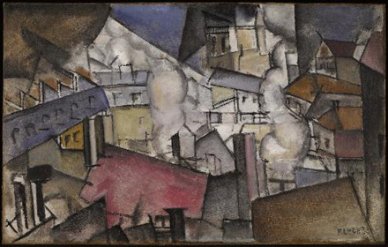
Léger, “Smoke over Rooftops,” 1911, returned in 2008 by the Minneapolis Institute of Arts to heirs of Alponse Kann
In the Association of Art Museum Directors’ continued chronicling of good news about museums’ good works, it has just launched a Registry for Resolution of Claims for Nazi-Era Cultural Assets. (Grammar check: The cultural assets aren’t “Nazi-Era”; the gaps or other issues related to their provenance are.) The registry lists restitutions and retentions of such objects by institutions belonging to AAMD, and it also provides a useful compendium of links to international sources of information on works with incomplete Nazi-era provenances.
But the registry itself is incomplete. According to AAMD’s description:
The registry lists objects restituted and settlements made since June 4, 1998, the date the report was adopted.
Presumably, museums’ participation in AAMD’s new registry (as distinguished from its year-old Registry of New Acquisition of Archaeological Material and Works of Ancient Art) is voluntary. AAMD’s guidelines state that its members MUST post new antiquities acquisitions with incomplete post-1970 provenances on its registry.
But when it comes to resolved disputes with Nazi-victims’ heirs, some museums may prefer to put that unpleasantness behind them, rather bringing these matters, once again, into the public eye. And some institutions probably just haven’t gotten around to posting their information yet.
The new registry is intended to supplement the American Association of Museums’ Nazi-Era Provenance Internet Portal,
a searchable database of information that can be accessed by potential claimants. NEPIP currently lists more than 28,000
objects (from 166 participating museums) that “changed hands in
Continental Europe during the Nazi era (1933-1945).”
